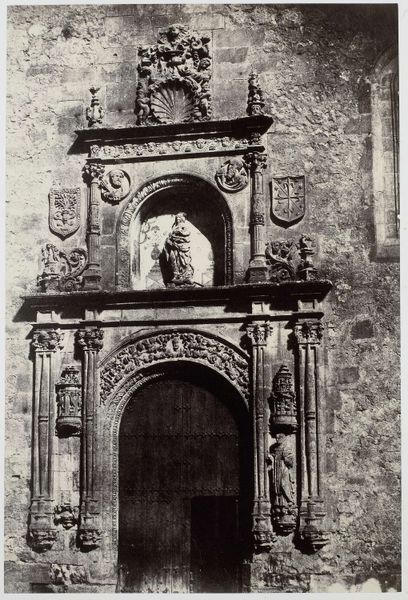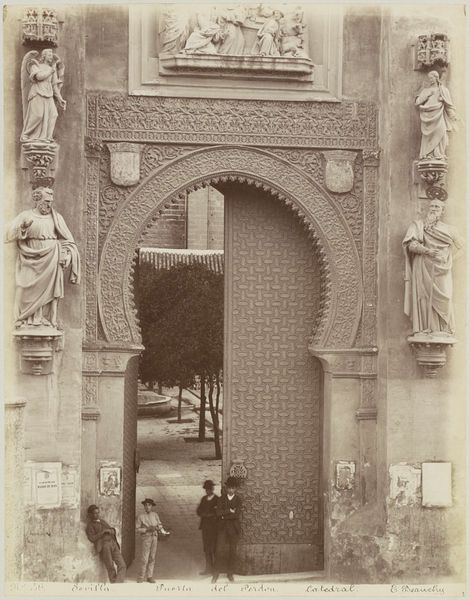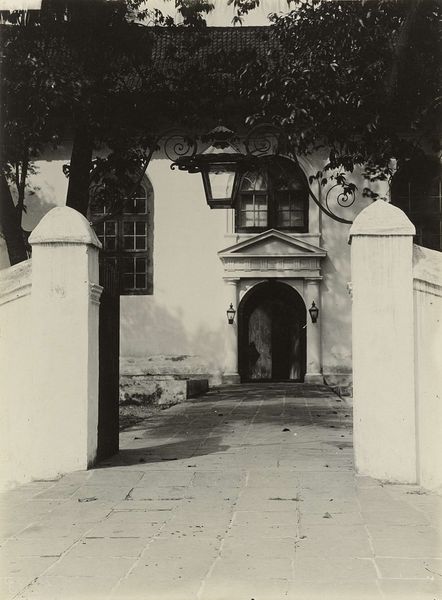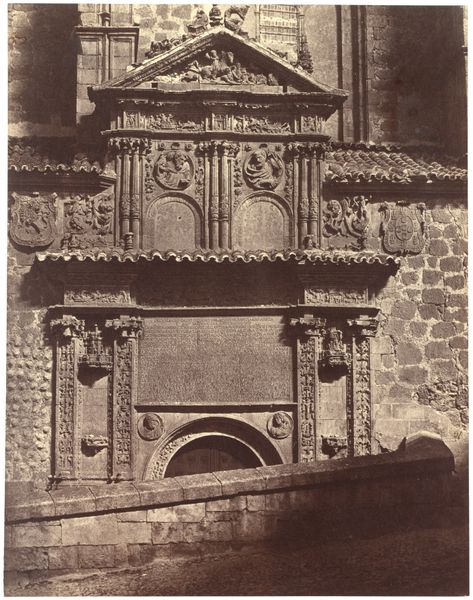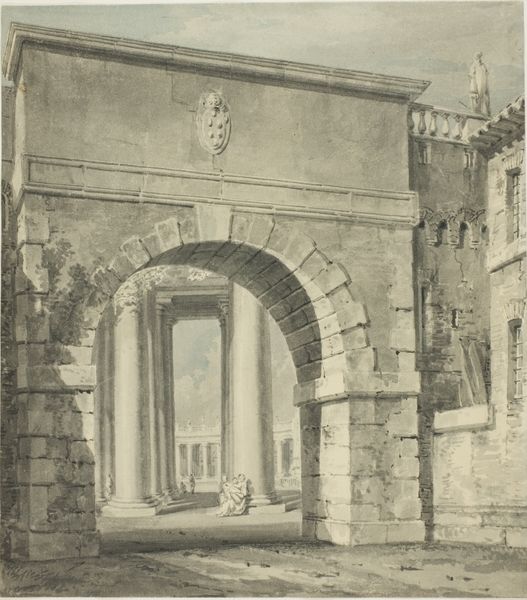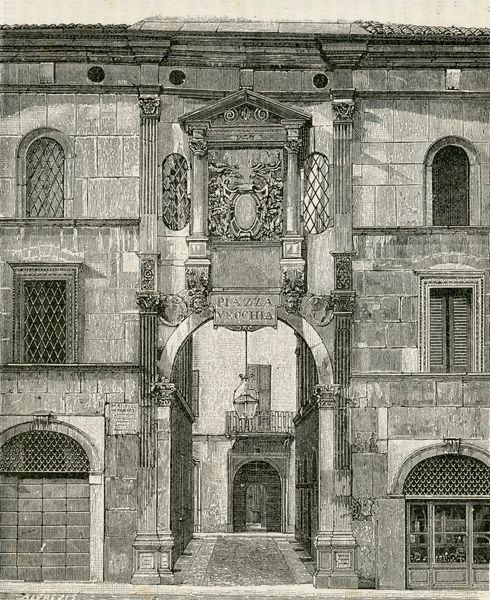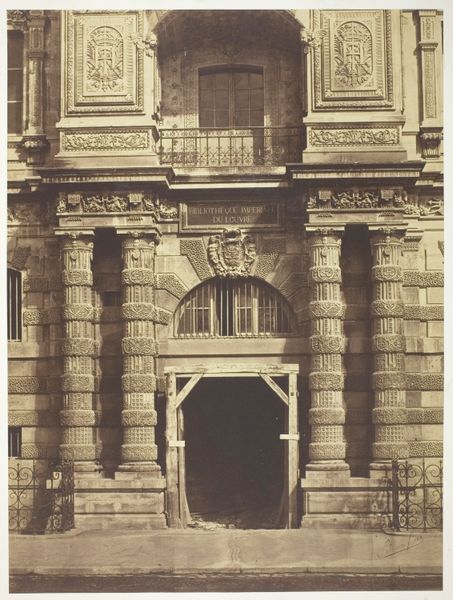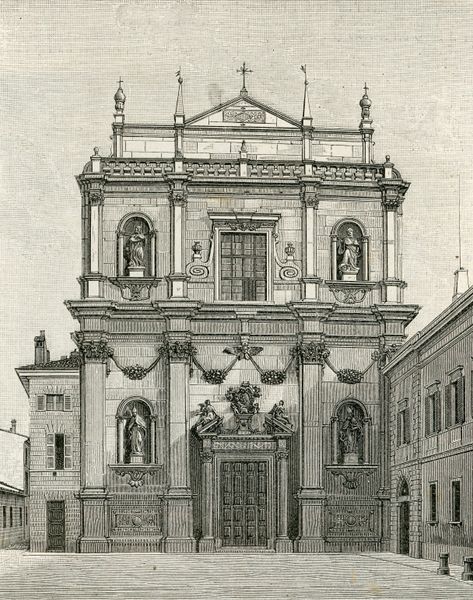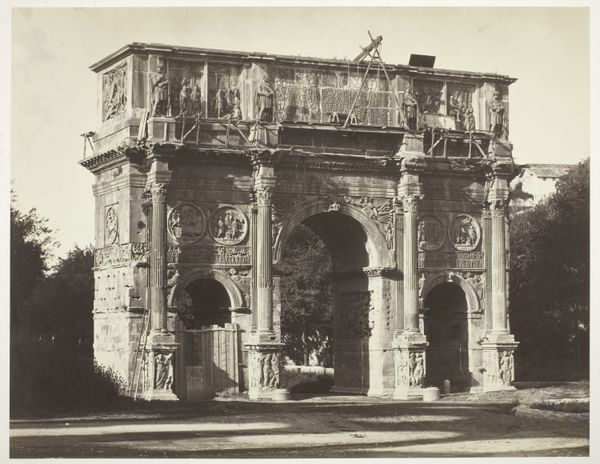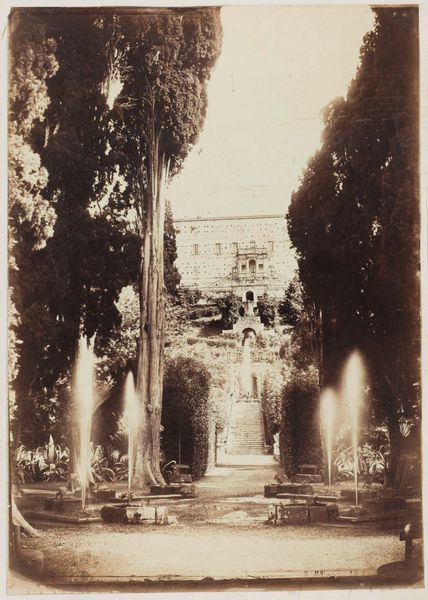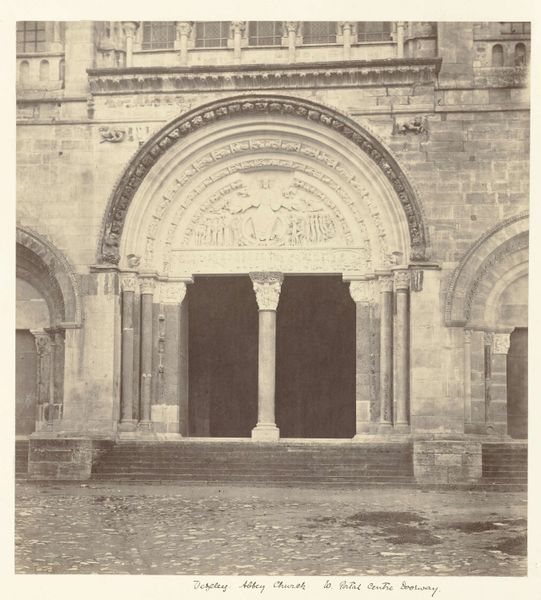
print, photography, architecture
# print
#
landscape
#
historic architecture
#
photography
#
mexican-muralism
#
architecture
Dimensions: image: 16.1 x 12.4 cm (6 5/16 x 4 7/8 in.) sheet: 40.3 x 31.4 cm (15 7/8 x 12 3/8 in.)
Copyright: National Gallery of Art: CC0 1.0
Curator: Let’s consider Paul Strand’s photograph, "Church, Coapiaxtla," possibly created between 1933 and 1967, part of his work made in Mexico. What are your first thoughts? Editor: Immediately, the quietude strikes me. There's a timeless quality, a solemn stillness captured in the weathered stone and the muted tones of the print. The symmetry is compelling—gateposts topped with statues frame the church behind. Curator: For me, I am drawn to the materials themselves, the probable history, the possible labour. Think about the building itself: what combination of materials, likely sourced locally, comprised this church and the gate? Look at the formal nature of it; he has considered the impact this would have as an accessible printed work. Editor: It is clear he understands this location at an archetypal level, that we might see the universal in a small regional church. The cross at the top, flanked by the bowed figures—aren’t those figures telling? One clutches something to her chest; the other appears to pray. It really captures something deep about faith, a quiet acceptance of fate. Curator: Right, and it’s important to remember the social and political context here too. Strand was very engaged with ideas from Mexican Muralism. This wasn’t just a pretty picture. His material, in this instance the photographic paper, became a platform, making this culture available to the US public. Editor: I agree. There's a certain resonance with Mexican Muralism's emphasis on national identity and cultural pride through the architecture of its visual program. This photograph encapsulates something of the soul of a place and the resilience embedded in faith, offering a potent image with cultural continuity in mind. Curator: So it comes down to material evidence and circulation of information; in Strand’s lens, photography turns this church into both an object of cultural exchange, and I think you make the case that this echoes through time and informs our idea of religion, resilience and place, regardless of context. Editor: Precisely. The symbols are not static; they are activated across decades and in new settings. Curator: A beautiful connection, and a good illustration of how the process and the image intersect here, allowing multiple readings across time.
Comments
No comments
Be the first to comment and join the conversation on the ultimate creative platform.
